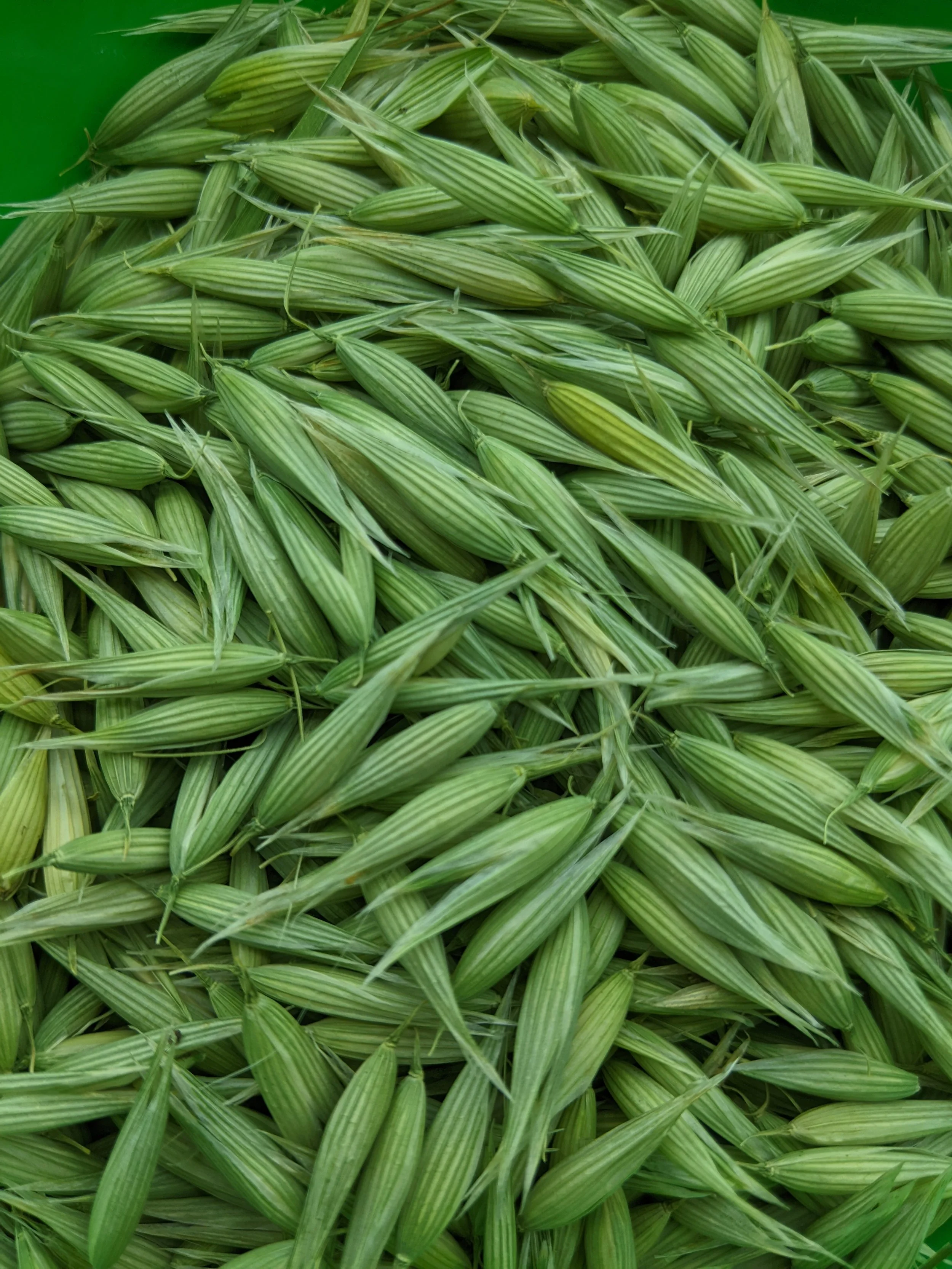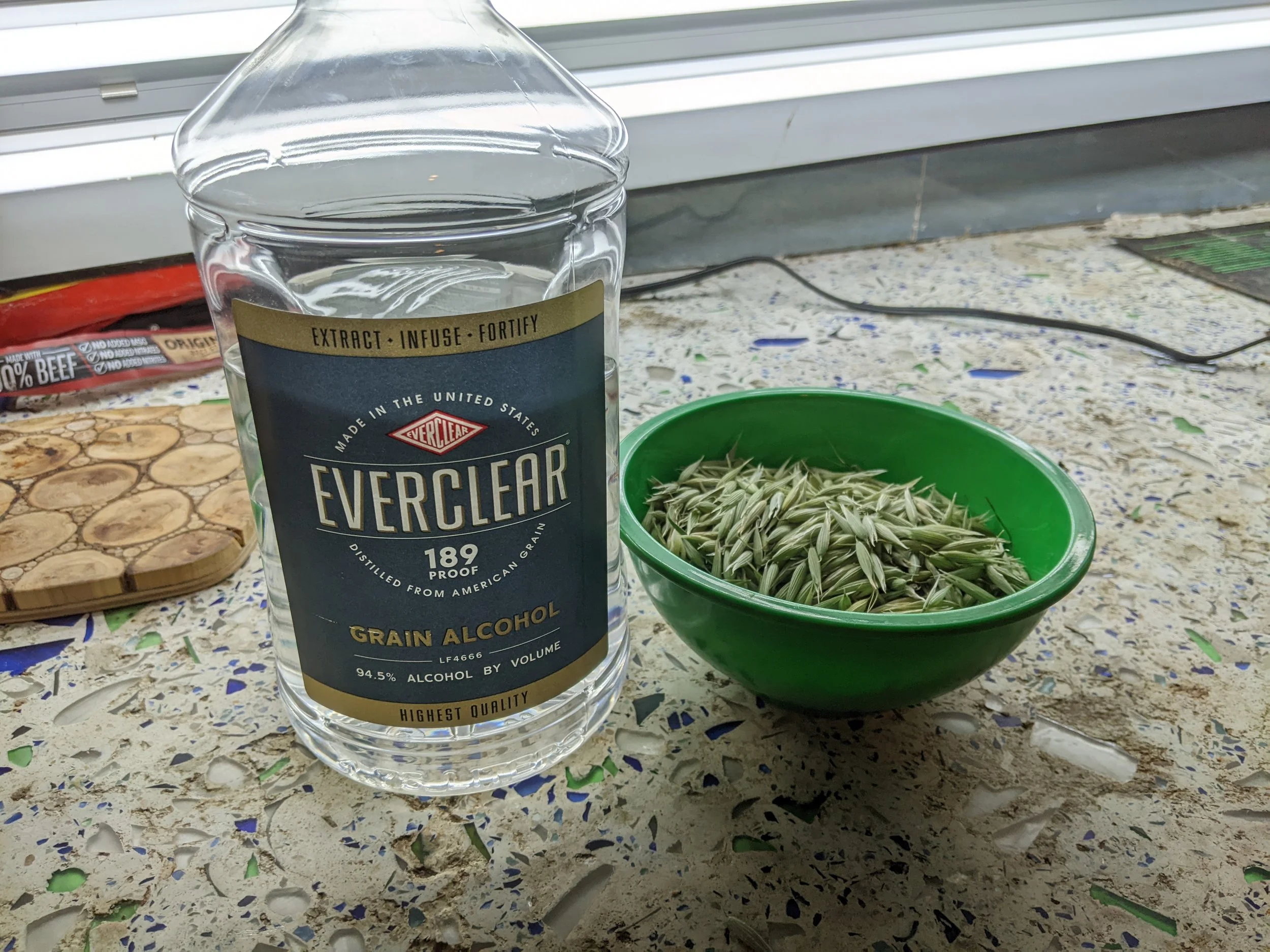Making Milky Oats Tincture
Oats really are amazing. Most of us are probably familiar with oatmeal and oatmeal cookies, both of which are delicious (but not with raisins. They are just humiliated grapes). Then, when looking for good cover crops, I came across oats as a cover and “nurse crop” - oat seedlings will protect smaller, more delicates seeds when they are young. A few years ago, we planted some in March on fresh turned earth, and they grew beautifully. When we planted them in September, they even overwintered.
By a fun coincidence, I reached oats in my herbal training shortly before my oats were ripe. It turns out this humble grain has medicinal uses too.
There are two ways to use oats in herbal medicine: as a nutritive, and as a calming nervine. As a nutritive, oats contain trace minerals that can help build a person up. For this, you can use dried oat tops and straw in a tea. This is a very mild tasting tonic, and a good way to get some extra nutrition.
The second use of oats - as a nervine- is what we made this last summer. For this, you need milky oats. What are milky oats, you ask? No, they have nothing to do with oat milk, which is made from dried (and often rolled) oats. Milky oats are a specific stage of ripeness; before the oats turn brown and hard and are ready to harvest as grain, they turn plump and will squirt out a white, milky substance when squeezed, which gives them the milky oat title. This milky liquid is sometimes called the latex, and it is this milk that has compounds which can calm and soothe an overactive nervous system.
The catch is that these compounds to not survive drying very well. If you dry milky oat tops, you have a nice mild tonic as mentioned above but not the nervine benefits. To benefit from these properties, tincturing is your best bet, since the oats are only in the milky stage for a few days in a year. I know herbalists who pay overnight shipping to get milky oat tops fresh to tincture, but since they are so easy to grow, we have always been able to harvest our own. For a week or so, I go out and squeeze a few of the grains. When the milk squeezes out, we grab a bowl and just run our hands along the stems to get all the grains into the bowl.
To make the tincture we use a high proof alcohol; the fresh grains have a good deal of moisture, which brings down the alcohol content.
The main challenge is to get a high enough herb to alcohol ratio; the goal is a nice strong 1 part herb to 2 or 3 parts alcohol. The volume of the whole grains is enough that you can’t cover them with so little alcohol. Just as importantly, the alcohol can’t really extract the medicine when the grains are whole. Enter - the blender! We happen to have a vitamix, but any decent blender will do. We add the oats and alcohol, and pulse until the grains are coarsely chopped, and the liquid is a lovely bright green.
It spoons out of the blender like a thick stew. We put it in a jar in the dark for a month, and then strain it out. It stays a nice bright green for awhile, but eventually darkens. We made a nice big jar this year, and have been enjoying it during stressful times as part of our bitters blend. I especially love the fact that we made this medicine out of a cover crop that was improving our soil while it grew. Permaculture in action!!







